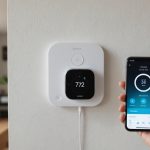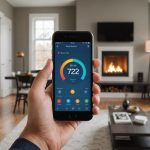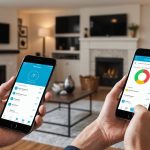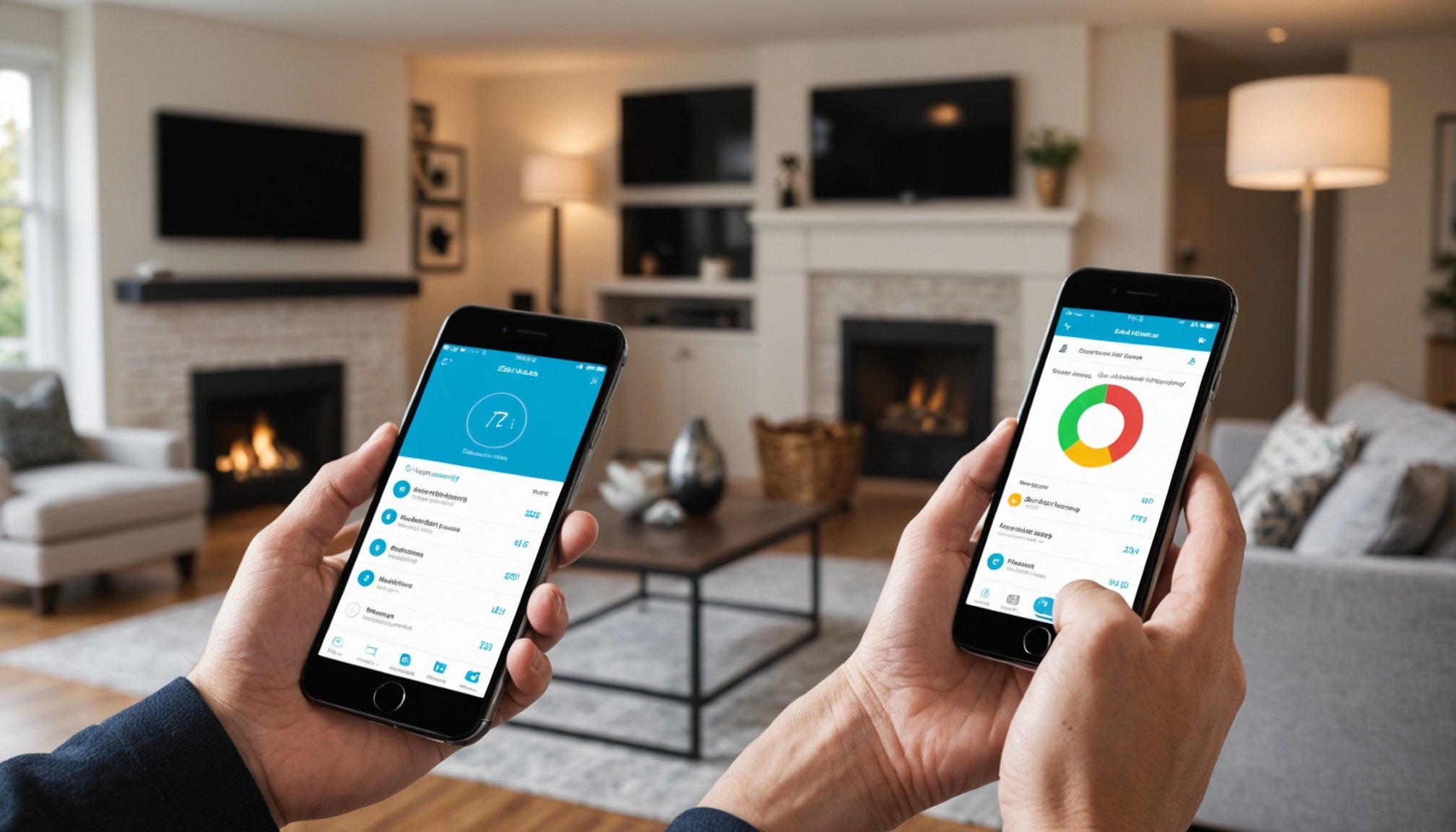Understanding Smart Home Management
Delving into the world of smart home technology, users can easily unlock a realm where daily tasks transform through smartphone control. This advancement raises user convenience to new heights by simplifying tasks, offering remote accessibility, and embedding energy efficiency into household operations. The core of smart home management lies in seamless integration, ensuring that all devices work harmoniously. This compatibility is essential to avoid functionality disruptions and maximise the system’s potential.
The selection of smart home devices requires careful consideration of several key factors. Users should prioritise devices that naturally align with existing systems or those they plan to adopt in the future. Ensure the gadgets are compatible with a comprehensive smartphone control app tailored for easy management. Furthermore, emphasis on security is vital. Devices should offer robust data protection features to secure personal information and prevent unauthorized access.
Also read : Revolutionize your home heating: utilize your smartphone for expert zone temperature control
Ultimately, the allure of a smart home is its ability to evolve with user needs, adapting over time to provide enhanced control and efficiency. By choosing the right components and prioritizing seamless integration, users can achieve an optimised living environment that reflects a future-ready lifestyle.
Setting Up Smart Home Devices
Setting up smart home devices can be straightforward if the installation process is tackled step-by-step. Most devices come with a user guide that outlines crucial steps, making the task manageable. To install a smart home device successfully, it’s essential first to identify the correct application for app integration and ensure your device is compatible with your system.
This might interest you : Maximizing your smartphone”s capabilities: essential tips for turning it into an effective smart home hub
Step-by-Step Guide:
-
Prepare the Environment: Check for compatibility and optimal positioning. Verify Wi-Fi connectivity as this influences device setup.
-
Follow Installation Instructions: Adhere to the user guide provided. This includes physically installing the device and connecting to power, if necessary.
-
App Integration: Download the appropriate app. Follow on-screen prompts to complete the integration. Most apps are intuitive, providing guidance to connect the device to your network.
-
Test and Configure Settings: After successful installation, configure specific settings to align with your needs.
For instance, when installing a smart thermostat, ensure it’s linked to your home’s Wi-Fi network and the corresponding app. Such real-life examples emphasize the importance of following these steps diligently to enhance functionality. Proper setup ensures a seamless user experience and efficient device operation.
Best Practices for Smart Home Control
Achieving optimal smart home control involves a combination of efficient device usage and enhancing the user experience. To get started, understanding how to maximize the functions of your devices is crucial.
Optimizing Device Functions
Begin by evaluating the performance of each device. This usually involves assessing energy consumption and response time. It helps to identify and troubleshoot any inefficiencies. For instance, scheduling routines can greatly enhance efficiency. By automating lights to switch off during daylight, you conserve energy. Customizing settings to align with your preferences also elevates user convenience. This might include adjusting thermostat settings based on your daily activities.
Streamlining Control via Smartphones
Smartphones offer a convenient way to manage your smart home. A variety of apps provide comprehensive control over various devices. Choices like Google Home and Apple HomeKit are widely recommended. Additionally, creating shortcuts can significantly improve accessibility. Have quick access toggles for your frequently used devices right at your fingertips.
Ensuring that all apps and devices are consistently updated is vital. Updates often include security patches and feature improvements, which enhance your experience and protect your system. Keeping your software current is a straightforward way to maintain efficiency and security in your smart home ecosystem.
Troubleshooting Common Issues
Navigating the world of smart home devices can be thrilling, yet it’s not without its challenges. Users often encounter common issues related to connectivity, which can hamper device performance. Understanding the root of these troubles is the first step towards a resolution.
Some frequent problems faced include unstable Wi-Fi connections, unresponsive devices, or complications integrating various smart devices. These issues can often be swiftly diagnosed by verifying network settings or device compatibility. Ensuring that your home network operates on a stable internet connection can mitigate most concerns.
For troubleshooting connectivity issues, start by restarting your router and the smart device in question. Verify that all devices are connected to the correct network and that encryption settings are aligned. If problems persist, consult the device’s manual for resetting to factory settings as it’s a useful step in many scenarios.
When dealing with more complex issues, online resources and customer support provided by manufacturers can be invaluable. Forums, FAQ sections, and direct support channels often hold the key to resolving persistent issues. Users may also consider seeking help from third-party tech support services specializing in smart home technology to aid with advanced troubleshooting.
Enhancing Smart Home Security
In the rapidly evolving world of smart home security, understanding security features in smart home devices is crucial. Many manufacturers now equip devices with advanced measures such as encryption and multi-factor authentication, aiming to bolster user trust. These features work by ensuring data transmitted between the device and its control application is encrypted, reducing the likelihood of interception by malicious entities.
To further enhance data protection, incorporating best practices is essential. Users should regularly update devices with the latest firmware, which often includes patches for known vulnerabilities. Additionally, utilizing strong, unique passwords for each smart device reduces the risk of unauthorized access.
However, technology alone cannot guarantee complete safety. Comprehensive strategies play a pivotal role in maintaining smart home safety. This includes positioning devices, such as cameras, away from private areas and regularly auditing connected devices to ensure no rogue element has gained illicit access. By adopting these strategies, users can mitigate risks associated with the increasing integration of smart technologies into everyday life.
Furthermore, fostering an environment of informed and cautious use promotes user trust, ensuring the enticing promise of security that smart home devices offer is not only theoretical but palpable in practice. The balance between technology and vigilant practice is paramount for optimal protection.
Future Trends in Smart Home Technology
As technology continually advances, smart home trends are on the brink of a revolution. Innovations such as artificial intelligence and the Internet of Things (IoT) are transforming the smart home landscape. These breakthroughs provide homeowners with unprecedented levels of control and efficiency.
Emerging technologies like voice-activated assistants and smart appliances are becoming household staples. They offer seamless integration and automation, allowing for improved energy management, security, and convenience. As more devices become interconnected, users can expect even more streamlined experiences.
One of the significant innovations is the development of predictive technology, which anticipates user needs by analysing patterns and preferences. This can lead to more efficient energy use and enhanced personalisation of experiences. Users can manage their environment with minimal input, as devices learn and adapt to their habits.
Looking ahead, predictions for the future indicate further sophistication in smart home management. With ongoing updates, these systems may gain capabilities such as real-time data tracking and advanced remote control. Users will benefit from improved safety features and increased energy savings, making homes smarter, safer, and more efficient than ever before.
These advancements signify how future technology will redefine how we interact with our homes, ensuring they accommodate our lifestyles seamlessly.











